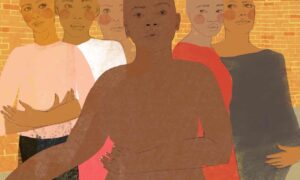
According to Oxford Languages, a preference is defined as a “greater liking for one alternative over another or others,” synonymous to a bias, predisposition or leaning. I’m sure you know — we all have them.
When it comes to preferences, they can mold not only the people that you choose to pursue romantically but also the people that you choose to respect, see as human, and treat properly.
While these preferences themselves are subjective, there are a few undeniable truths regarding the matter: everybody has preferences that they are allowed to stand behind and when it comes to dating, nobody can force you to date someone who you are not attracted to.
Despite these aforementioned truths, there are an overwhelming amount of “preferences” that can be seen in today’s society that are rooted in problematic ideologies … more specifically, colorism.
Social activist and acclaimed author Alice Walker defined colorism as “prejudicial or preferential treatment of same-race people based solely on their color.” This term was believed to be coined by Walker in 1982. Forty years later, what does colorism look like in 2020?
Social media is one of the main culprits of the perpetuation of colorism. In most corners of the internet we can see women of lighter complexions being uplifted and sought after while women of darker complexions are put down, simply because they don’t pass the paper-bag test.
Lighter skin is often associated with femininity and softness, whereas darker skin is aligned with masculinity and firmness. Something that isn’t talked about very often is the fact that this colorism is one that plays to the detriment of both dark skinned women and light skinned men in a society that devalues a “masculine” woman and shames a “feminine” man.
Darker skinned women such as Serena Williams and Michelle Obama are often compared to animals, or referred to as “manly” and “unattractive.”
While one could easily argue that these women are — complexion aside — simply not attractive, why is it that dark-skinned women have to be exceptionally beautiful in order to receive even an ounce of the respect that their light skinned counterparts receive for simply aligning more with Eurocentric beauty standards?
It seems as if the Black community has yet to have the “a-ha” moment of realizing that the colorism that can be seen within our community is somewhat a microcosm of the racism that we experience in this society. Black people understand what it’s like to be put down and degraded by other races merely for being black — then turn around and degrade those in their own community for being a darker shade than them.
This is something that is not uncommon — especially to the dark-skinned women who have been made to feel less than for the sake of a “preference.”
How do we as a community identify the fine line between a harmless preference and one that is based on problematic ideology?
For one, ask yourself what it is about women with darker skin that you find so unattractive. Ask yourself why you are able to write off a large demographic of people for having a certain complexion. Look in the mirror: If your skin is the same color as those who you choose to dehumanize, ask yourself what it is about the color of your own skin that you have such an aversion to. If your reasoning behind preferring light-skinned women is followed by the degradation of dark-skinned women — congratulations, you are a colorist.
No one is telling you that you cannot have your own preferences. It is OK to have a preference: people like what they like and that is fine. The issue lies when we fail to unpack and uproot these preferences and understand the way that they can be harmful not only to the people on the other side of those biases, but also to ourselves.